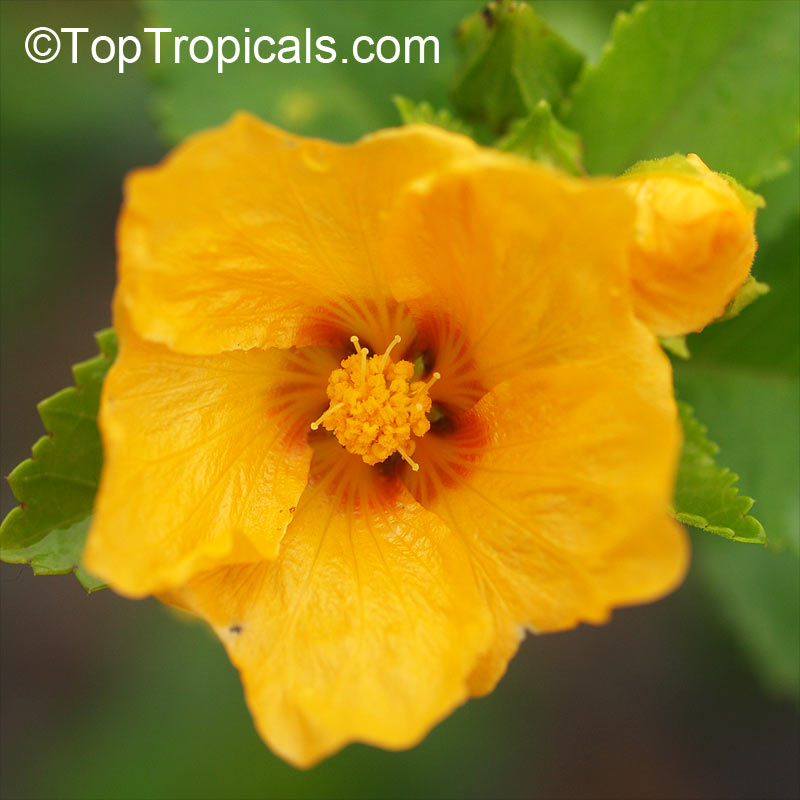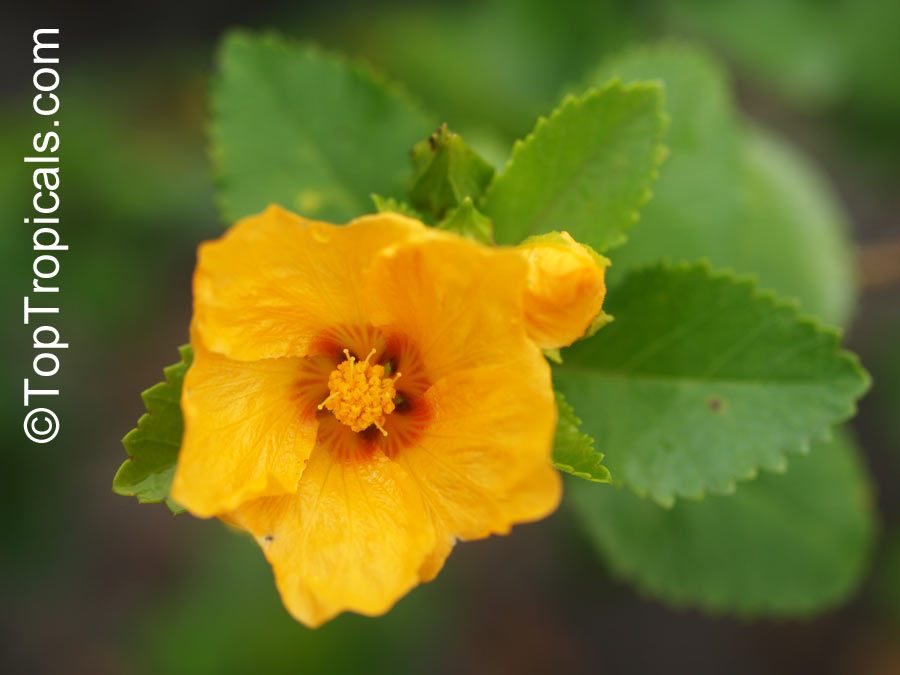Sida fallax (Yellow 'ilima)
Top Tropicals Plant Encyclopedia
Botanical name: Sida fallax
Common name: Yellow 'ilima
Family: Malvaceae
Origin: Pacific Islands







It is a spreading small shrub that ranges in height from two to five feet tall, with sprawling stems. The dark green leaves are small with an aromatic scent, and alternately arranged on the stems.
In full sun, Sida fallax produces a profusion of beautiful, buttercup-like, yellow and orange flowers that bloom all year round and attract local bees, butterflies and many other pollinators. Flowers have five petals and are generally smaller than the diameter of a dime. The plant is well adapted to dry conditions and will thrive without supplemental irrigation, and can even tolerate occasional inundation in the wild. Further, it performs well in seaside conditions and is fairly salt tolerant.
Sida fallax is an ethnomedical plant that is used in a variety of ways by people. The leaves are used for natural medicinal purposes and for making aromatic garlands for ceremonial occasions. It can be found planted in many gardens in tropical and semi-tropical regions of the world. Its home range includes Hawaii, but is also found throughout the Pacific Islands.
In cooler climates, where temperatures dip below 30 degrees Fahrenheit, Sida fallax may be grown as an annual, or grown in a pot and brought indoors before frost. When grown in USDA Zones 9-11 or indoors, best growth is achieved with deep watering and a fertile soil with added organic nutrients such as compost or manure. In warm regions, where temperatures remain mild year round, Sida fallax should be planted in well-drained soil and watered only sparingly when in dry periods. This plant does well in full sun and will flower profusely in the warm months. If planted in beds, allow ten to twelve inches of unplanted space in all directions from the center of the plant. Mulching around the planted area can also conserve water and keep weeds to a minimum.


